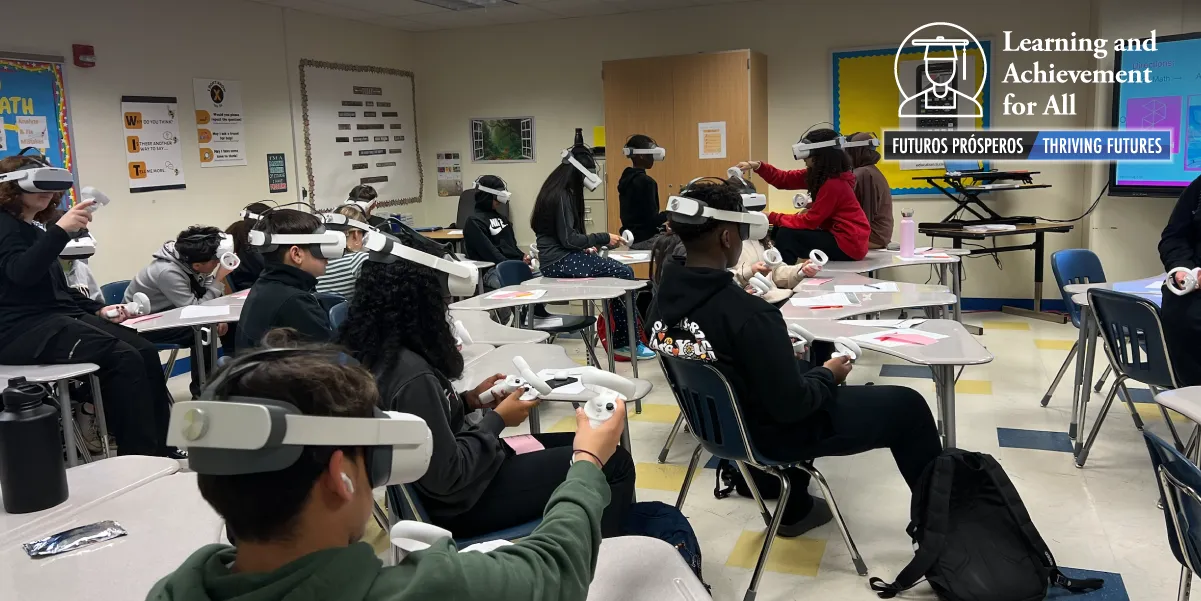 Teachers at Osbourn Park and Brentsville District High Schools have embarked on an exciting journey with the introduction of virtual reality (VR) programs—Prisms Math and Prisms Science. These innovative programs aim to provide students with immersive, real-world experiences that enhance their understanding of mathematical and scientific concepts.
Teachers at Osbourn Park and Brentsville District High Schools have embarked on an exciting journey with the introduction of virtual reality (VR) programs—Prisms Math and Prisms Science. These innovative programs aim to provide students with immersive, real-world experiences that enhance their understanding of mathematical and scientific concepts.
Each module begins with a mission—a challenge centered around a specific mathematical or scientific concept. Students step into the VR environment, where they encounter real-world problems and interactive elements. As they collect data, they become acquainted with academic terms and key concepts.
In the initial part of the module, students apply mathematical or scientific principles to solve authentic problems. This hands-on experience bridges the gap between theory and practical application. The second VR experience within each module delves deeper into the concepts. Students tackle more complex challenges, striving to achieve specific goals. Guided notes provided after each VR session allow them to reflect on their experiences and reinforce their learning throughout the course.
After completing the VR sessions and debriefing with guided notes, students transition to traditional classroom settings. Students connect their VR experiences with the theoretical concepts learned. They explore how the virtual world aligns with their academic understanding of math and science.
One Osbourn Park High student shared, “The VR lesson helped me understand the topic better since I could interact with the problems I was dealing with.”
The immersive VR environment eliminates distractions like cellphones and internet browsing, allowing students to focus fully on complex concepts. Additionally, it enhances spatial reasoning as students engage with elements within the VR world.
Math and science teachers have noticed a rapid learning curve among students. The combination of VR experiences and traditional classroom activities creates a dynamic learning environment that fosters deeper understanding and engagement.
"Students enjoy doing something different, being active (even virtually) and seeing the real-world situations to apply math. It's also great that the problems are often at or just above their current ability, which encourages them to stretch their understanding. Finally, they just like using technology. Once one class at our school started using them, the other students in the school began wondering when it would be their turn," said Juli Dempewolf, math teacher at Brentsville District.
Along with Brentsville and Osbourn Park High Schools, Lake Ridge and Marsteller Middle Schools are also piloting the VR headsets.
